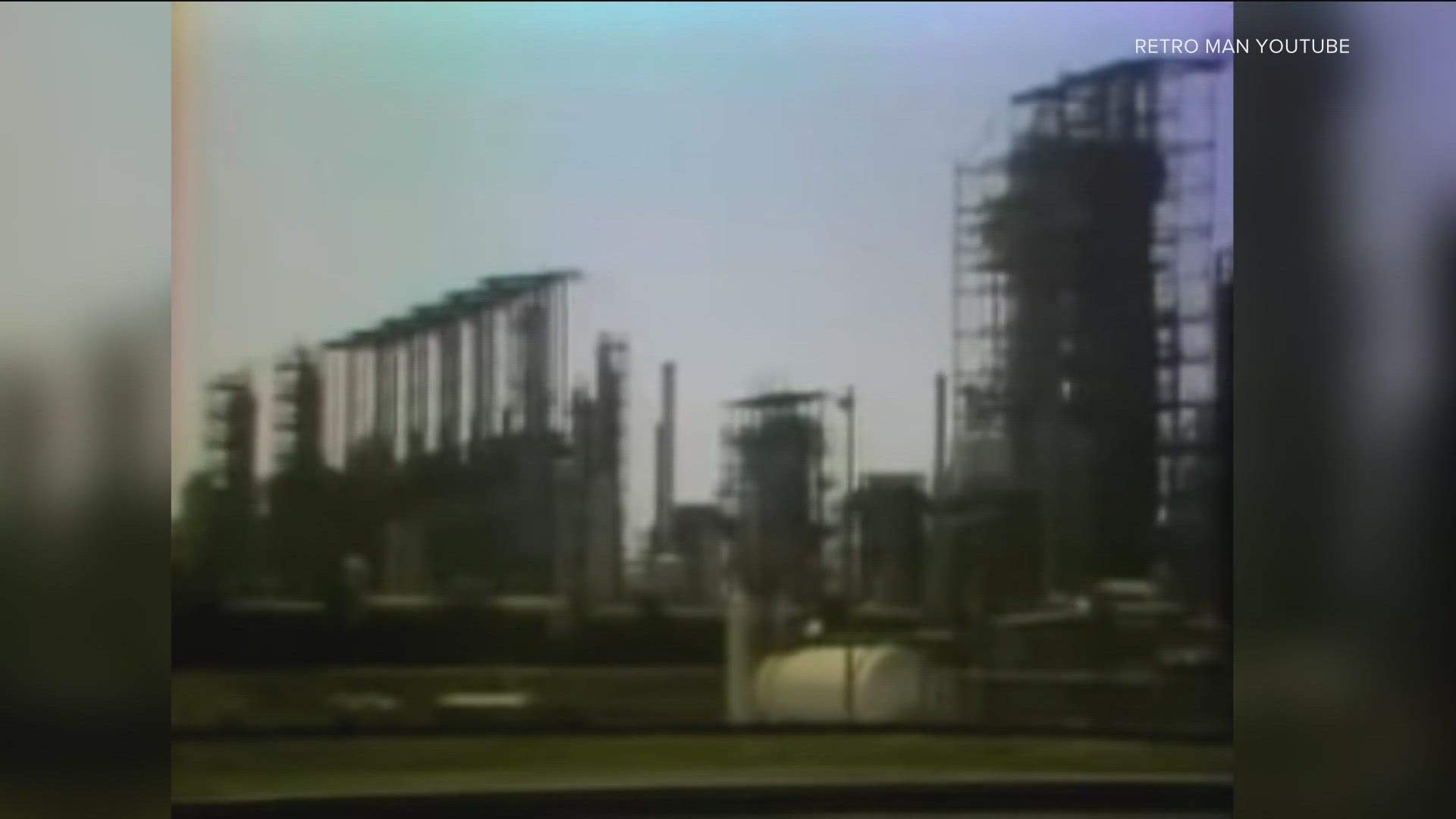BOISE, Idaho — The City of Boise is known for many things that set it apart from other places in the U.S.: its gorgeous scenery, long summer nights, and endless outdoor activities all year long.
It's also home to some pretty unique geological features, specifically in and along the foothills and into Central Idaho.
Near Fort Boise and the Military Reserve hiking trails, sits a fault line, formed thousands of years ago. Underneath that ground is granite. It's part of a bigger area called the Idaho Batholith.
"(It) covers around 10,000 square miles across Idaho, and was actually formed from a subduction zone.," Tina Riley, a geoscientist and geothermal development coordinator with the city of Boise, said. "So if you think of subduction is when one plate is subducting under the other plate, and we often know about that in terms of mountain formation. But it also creates molten lava that solidifies to create granite, which is the source of heat for the hot springs we see across Idaho, and our geothermal system in Boise."
Scott Lewis with the Boise Warm Springs District said heat is known as 'hot soil.'
"It has lots of minerals in it calcium, magnesium. So whenever the water hits the surface, It takes about 30,000 years for it to get down to where the geothermal aquifer is sitting right now that's 2,200 feet below us," Lewis said. "And in that 30,000 years, the water slowly picks up other minerals, which causes it to slowly heat up by the time that it gets to that point, that's where it hits 180 degrees."
About 30 years after the city of Boise was founded in the late 1800s, one Boisean decided to tap into that hot water for commercial and residential use.
"C.W. Moore was a developer for the Boise," Lewis said. "He did a lot with the cold water. And so, he decided to start utilizing the hot water. And the first place that he pumped it over to was the natatorium."
"He was the first person who had this imaginative idea to use geothermal to heat a building," Riley added.
"And from that point, he figured that he could use it in homes as a hot water source. So then he started taking it to his homes and then selling it to his neighbors as well," Lewis said.
In 1892, the Boise Warm Springs Water District was founded. Lewis told KTVB it's the oldest geothermal district in the country, and possibly the oldest in the world.
By 1895, the district was piping the heated water, about 175 degrees Fahrenheit, to most houses off Warm Springs, the water coming from an aquifer hundreds of feet below the surface.
"It made it a lot cheaper to where most people could actually afford to enjoy the luxuries in life," Lewis said.
Today, more than 300 homes in the Warm Springs area use geothermal to heat their homes.
It wasn't until the 1970s, during the oil crisis, that the conversation of how to make geothermal energy use more widespread began to heat up.
"Oil and gas prices were going through the roof. So, the city of Boise was looking for more affordable forms of energy," Riley said. "At that point, there had been 90 years of history of Warm Springs Avenue thriving using geothermal. So we looked into that as an alternative form of energy."
In the early 1980s, the state drilled two wells near the statehouse to heat the Capitol Mall complex. It was the first state capitol in the country to be heated by geothermal energy.
"We looked into that as an alternative form of energy and drilled the wellbores to tap into it, constructed the system, and began operation in 1983," Riley said.
But there are differences in how the city of Boise and the Warm Springs District actually get the heat. The Boise Warm Springs District uses what's called an 'open system.'
The City of Boise uses a 'closed system.'
"The system is just such a simple design. Water comes up the wellbore, we borrow it for its heat, and then we put it right back down into the exact same aquifer that we got it from Julia Davis Park," Riley said.
"So we are not using the water, we're just borrowing it for its heating properties and then we put it back in the same aquifer."
In 1988, the Veterans Association began using geothermal heat for its 22 buildings near Fort Boise.
Today, the city of Boise operates more than 20 miles of pipeline that heat more than six million square feet of space, including at places like JUMP, city hall, the downtown YMCA, and several buildings on the Boise State campus.
"It was initially set up because it was affordable, but that's also allowed us to have a great source of reducing emissions for a number of decades and we continue to be able to do that to help meet our climate goals," Riley said.
In 2021, the City of Boise announced an initiative to become carbon neutral by 2050.
Boise has the largest geothermal system in the country, but it isn't the only city in Idaho tapping into this resource. Cascade, Twin Falls, and Ketchum also use geothermal energy.
"One of the ways I like to explain this is that many places will have a natural resource as a result of the geological setup (gold, silver, copper, etc.) And as you use those, they deplete and they're gone. What's so special about geothermal is that it's fully sustainable," Riley said.
Watch more Local News:
See the latest news from around the Treasure Valley and the Gem State in our YouTube playlist:

